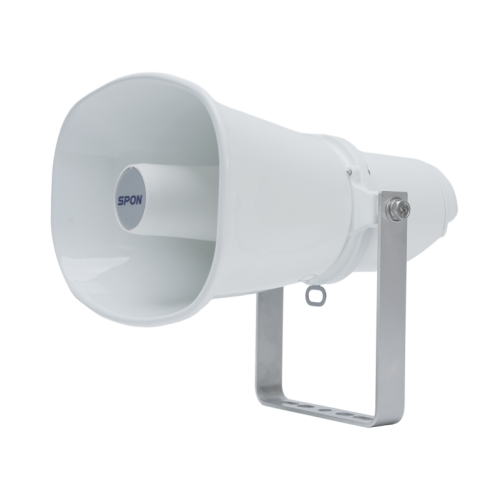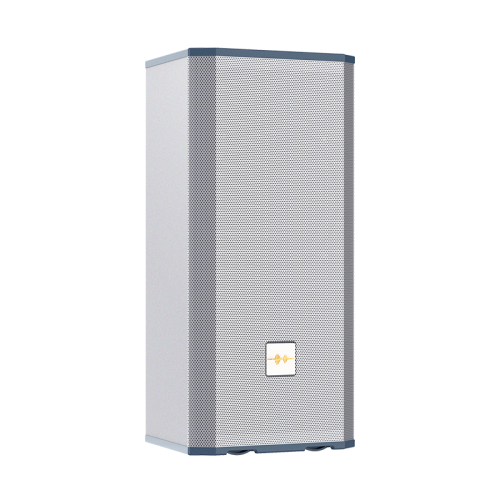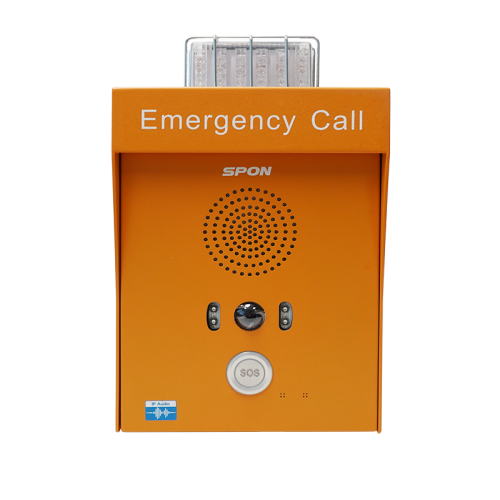The Ultimate Guide to Setting Up Your IP PA System Effectively
The Ultimate Guide to Setting Up Your IP PA System Effectively
Blog Article
Comprehensive Guide to Public Address Systems
Public address (PA) systems are commonly come across in different jobs such as workplace buildings, residential facilities, commercial office complex, colleges, hospitals, railway stations, airport terminals, bus manufacturing facilities, banks, and terminals - SPON Communications. This overview will offer an in-depth overview of PA systems

Components of a System
No matter of the sort of PA system, it usually includes 4 major components: source equipment, signal amplification and processing devices, transmission lines, and audio speaker systems.
Source Equipment
Music Players: Made use of for background music.
Microphones: Includes zone-select microphones and standard microphones.
Voice Storage Space Gadgets: For storing service and emergency situation program messages.
Signal Handling and Amplification Equipment
Audio Signal Processor: Manages audio signal compensation, attenuation, equalization, etc.
Pre-Amplifier: Pre-amplifies audio signals.
Power Amplifier: Intensifies audio signals to drive audio speakers, giving constant voltage result.
Transmission Lines
The solution monitoring platform software application allows the tracking center to put in centralized governance over the program and intercom communication systems. It assists in online device condition surveillance, mistake medical diagnosis, and troubleshooting, strengthening system stability and consistency.
Speakers
Ceiling Audio Speakers: Indoor, flush-mounted in the ceiling, continuous voltage or consistent insusceptibility.
Wall-Mounted Speakers: Wall-mounted, continuous voltage or consistent impedance.
Column Audio Speakers: Free-standing, appropriate for interior or exterior use.
Horn Audio speakers: High level of sensitivity, suitable for outdoor or indoor usage.
Masked Speakers: For exterior settings like yards or parks, developed to resemble rocks, stumps, or mushrooms.
Audio Technical Specs of PA Systems
In everyday environments, common sound stress levels are:.
• Workplace noise: 50-60 dB.
• Normal discussion: 65-70 dB.
• Fabric factory sound: 110-120 dB.
• Little quality shooting: 130-140 dB.
• Huge jet aircraft sound: 150-160 dB.
Signal-to-Noise Proportion (SNR)
SNR measures the proportion of the signal voltage to sound voltage, shared in decibels. A greater SNR suggests less sound and far better audio quality. Usually, SNR must go to least 63 dB, with high-fidelity speakers reaching over 110 dB.
Input Sensitivity
This is the minimal input voltage called for to accomplish the rated outcome power. Greater level of sensitivity indicates less input signal is required. Usually, power amplifiers have an input sensitivity of 0.775 V (0 dB) to 1.5 V (+6 dB).
Optimum Outcome Power (Speakers)
The optimal power an audio speaker can deal with simply put ruptureds without damages.
Rated Power (Audio Speakers)
.
The continual power an audio speaker can deal with without distortion, determined in watts (W) Ranked power is an average value, and audio speakers can manage peak power up to 2-3 times the ranked power.
Continuous Voltage vs. Consistent Insusceptibility Outputs
Consistent Voltage (70V or 100V)
Uses voltage to drive speakers, enabling longer transmission ranges and multiple audio speakers in parallel. Audio quality is somewhat substandard contrasted to continuous resistance systems.
Power amplifiers should match the voltage ranking of the audio speakers to avoid damages.
Constant Impedance.
Makes use of current to drive audio speakers, supplying much better sound high quality however restricted transmission distance (as much as 100 meters)
Insusceptibility matching is crucial; as an example, an 8Ω amplifier must be matched with 8Ω speakers.
Choose and Configuring Audio Speakers
Speaker Selection
Indoor Spaces with Ceiling: Usage flush-mounted ceiling audio speakers without a back cover.
Indoor Spaces with Only a Framework: Use ceiling speakers with rear covers or hanging ball-type audio speakers.
Outdoor Locations: Usage weatherproof column audio speakers or horn speakers.
Parks and Gardens: Use masked speakers developed for visual functions.
High-End Interiors: Usage elegant dangling audio speakers.
Fire-Safe Areas: Use fire-resistant audio speakers with closed styles.
Audio speaker Setup
Speakers need to be dispersed equally across the service area to make certain a signal-to-noise ratio of a minimum of 15 dB. Regular background sound degrees and recommended speaker placement are:.
High-end workplace passages: 48-52 dB.
Big shopping center: 58-63 dB.
Busy street locations: 70-75 dB.
Speakers must be placed to make certain an audio pressure degree of 80-85 dB in the majority of atmospheres. Ceiling speakers need to be spaced 5-8 meters apart, or 8-12 meters for history music only. For emergency programs, ensure that no area is greater than 15 meters from the nearby speaker.
Amplifier Sizing
Computation Technique:
For solution and business PA systems: P= K1 × K2 × ΣPo where:.
P = Overall amplifier output power (W)
K1 = Line loss compensation variable.
K2 = Aging factor (1.2-1.4)
ΣPo = Overall power demand.
For smoke alarm systems, make use of 1.5 times the complete number of audio speakers.
Example Estimation:
For a history music system with 10 audio speakers at 20W each: P= 1.26 × 1.2 × 10 × 20W × 0.7= 211W.
Final amplifier capability must be 1.3 times this worth: 211W × 1.3= 274W
Installation Requirements
Audio speaker Positioning
Speakers should be equally and strategically dispersed to satisfy coverage and sound top quality needs
Power Supply
Tiny PA systems can utilize normal power electrical outlets, while systems over 500W need a specialized power supply. Power should be steady, with automatic voltage regulatory authorities if essential. The power supply should be 1.5-2 times the devices's power intake
Cable and Conduit Installment
Usage copper-core cable televisions for signal transmission. Cable televisions must be protected and routed with proper channels, preventing disturbance from electric lines. Ensure appropriate splitting up in between power and signal lines.
Lightning Security and Grounding
PA systems require correct grounding to avoid damages from lightning and electrical interference. Usage dedicated basing for equipment and ensure all grounding measures satisfy safety and security requirements
Installment High quality
Cable Television and Port Quality
Use top notch cords and adapters. Make sure connections are safe and secure and correctly matched to avoid signal loss or interference.
Audio speaker Links
Maintain proper stage positioning in between audio speakers. Usage trustworthy techniques for connecting cables, such as soldering or terminal blocks, and safeguard connections from ecological damage.
Grounding and Safety Checks
Validate all grounding is appropriately mounted and examine the security of power connections and tools setups. Perform thorough assessments prior to completing the installment.
Evaluating and Adjustment
Evaluate the entire system to guarantee all components operate correctly and fulfill style specifications. Readjust setups as required for optimal efficiency.
Craftsmanship Requirements for Public Address Solutions
Building And Construction Top Quality Needs
The high quality of building and construction in a public address (PA) system job is important to satisfying layout specs and customer demands. It is essential to purely adhere to the style strategies, stick to standards, avoid rework and delays, and maintain comprehensive construction logs. Trick locations to concentrate on include:
Cable Television Choice and Installation
During the building of a PA system, attention is frequently concentrated on devices, however the selection of transmission cords is additionally vital for accomplishing acceptable sound quality. High-quality broadcasting equipment (amplifiers, speakers, and so on) is necessary, yet the high quality of the transmission cables additionally impacts audio quality.
Parallel speaker cords have integral capacitance between the wires, which is not suitable for long-distance transmission as it can attenuate high regularities and create uncertain or stifled high noises. Twisted set cords can properly conquer this issue and needs to be utilized for long-distance transmission.
Shielded twisted set wires protect against electro-magnetic disturbance and improve cable television sturdiness, making them suitable for long-distance setups. The diameter of the wires additionally affects efficiency. Thicker wires lower transmission loss however boost cost and installation problem. The selection of wires need to stabilize performance and price, adhering to these standards:.
Usage balanced links for all signal connections in between PA system gadgets, with soldered endpoints.
For systems with fire alarm system features, make use of fireproof or flame-retardant copper-core cable televisions.
Cables should be directed via steel conduits or cord trays, and should not share trays with illumination or high-voltage line. Fire alarm system cords must have fire protection measures. The flexing distance of cable televisions should be no much less than 15 times the cable size, and power line must be divided from signal and control cords. Confirm cord lengths before installation and match them to the style drawings, minimizing cable splices. Make use of specialized adapters and leave sufficient cord length at both ends with clear permanent markings when splicing is necessary
.

Linking Speakers and Program Lines
When attaching audio tools, it's crucial to guarantee phase uniformity between audio speakers and program lines. Stage interference between speakers can create significant variations in sound stress levels, bring about unequal sound distribution. Adhere strictly to circuitry labels and standard link approaches.
Three usual connection methods in PA systems are:.
Turning Technique: Stripping insulation from cables, twisting them together, and safeguarding them with tape or clamps. This approach is basic but may degrade in time.
Screw Terminal Method: Stripping insulation and putting cables right into screw terminals, after that tightening the screws. This method is typically made use of.
Soldering Approach: Removing insulation, turning cables, and soldering them together, then covering with tape. This technique is much more trusted and ideal for high-demand or moist settings.
No matter the technique, use tinned cord to promote soldering and protect against rust. Usage PVC or metal conduit to protect exposed cords from joint boxes to speakers.
System Grounding
The PA control space need to have both functional and protective grounding. IP PA System To minimize disturbance from the power system, separate protective and functional groundings ought to be developed. Suggested method is to set up different copper strips for weak and solid electrical systems in their corresponding upright shafts. This guarantees optimum operation of the weak electrical system.
The overall grounding resistance should not surpass 1Ω.
Building and construction Inspection
As a result of the intricacy of PA systems with various links and components, thorough assessment is required. General examinations must include:
Safety checks of tools setup.
Verification of high-voltage line configurations (IP Paging System).
Precision of terminations and connections
Unique focus must be offered to device settings, such as resistance matching activate speakers. Validate that buttons are established correctly to avoid damage. Inspect the output selection activates signal source devices, settings on signal handling devices, amplifier connecting buttons, and power supply settings.
Once these actions are verified, get ready for equipment debugging. Considering that debugging approaches vary based on details task demands, they are not covered carefully here.
Quality Records
Certificates, technical requirements, and documentation for audio speakers, enclosures, transformers, controllers, electrical outlets, amplifiers, sound processing tools, shielded cable televisions, etc.
Pre-installation, surprise assessment, self-inspection, and common assessment documents.
Records of style changes and last drawings - IP Paging System.
Quality assessment and assessment documents for conduit and cable installation
Records of PA system installment and debugging.
Major Installment Requirements
Tools Setup Order
PA system devices is usually mounted in cabinets. For less complex systems, a 1.0-meter cabinet might be enough. Location often used tools like the primary broadcast controller on top for very easy gain access to. For more facility systems with a 2.0-meter cabinet, position frequently made use of equipment between 0.8 to 1.5 meters for benefit
.
Equipment Link Order
Attach the computer to the main broadcast controller. Audio lines normally attach directly to the input of the preamplifier or the very first channel of the mixer. The mixer outcomes are dispersed to every amplifier, and if utilizing pure power amplifiers, attach to the INPUT sound input. Amplifier results after that connect to addressable terminals, area control boxes, or zone selectors, and lastly to the audio speakers
.
Electrical wiring Considerations
For comprehensive wiring, different sound and power lines making use of various manufacturers' cable televisions can aid stay clear of complication. Plan circuitry beforehand to prevent missing out on wires, which would require redoing the entire installment.
Power Supply
Use a specialized power sequencer for PA systems to make certain uniform power management and regular gadget startup sequences. The major power supply must consist of a ground line to shield devices and stop static-related dangers
Devices Choice
Do not count exclusively on appearance; take into consideration customer evaluations and market track record. Products from trustworthy suppliers with extensive screening and experience are usually much more dependable
Wireless Microphones
For cordless microphones, select UHF models for better range and signal stability. Choices include one-to-one, one-to-two, one-to-four, or one-to-eight arrangements. For mobile usage, choose headset microphones. Lavalier microphones might have poorer sound top quality and are vulnerable to feedback
.
Link Cords
Usage strong connections for long life and stay clear of relying upon adapters, which can trigger loosened links over time. Effectively solder connections to make sure durability and simplicity of maintenance.
Closet Installation
If making use of deep power amplifiers, ensure the cupboard dimensions (e.g., 600x600mm) are suitable with the tools. Measure cupboard deepness and spacing before installation.
Proper preparation, premium tools, and careful setup and upkeep are key to attaining optimum sound high quality and dependable efficiency in a system.

Audio speakers must be put to guarantee an audio stress degree of 80-85 dB in the majority of settings. When connecting audio tools, it's important to make sure phase uniformity between audio speakers and program lines. Phase interference in between audio speakers can cause significant variants in audio pressure levels, leading to uneven audio distribution. Amplifier results then link to addressable terminals, area control boxes, or zone selectors, and lastly to the audio speakers.
Report this page